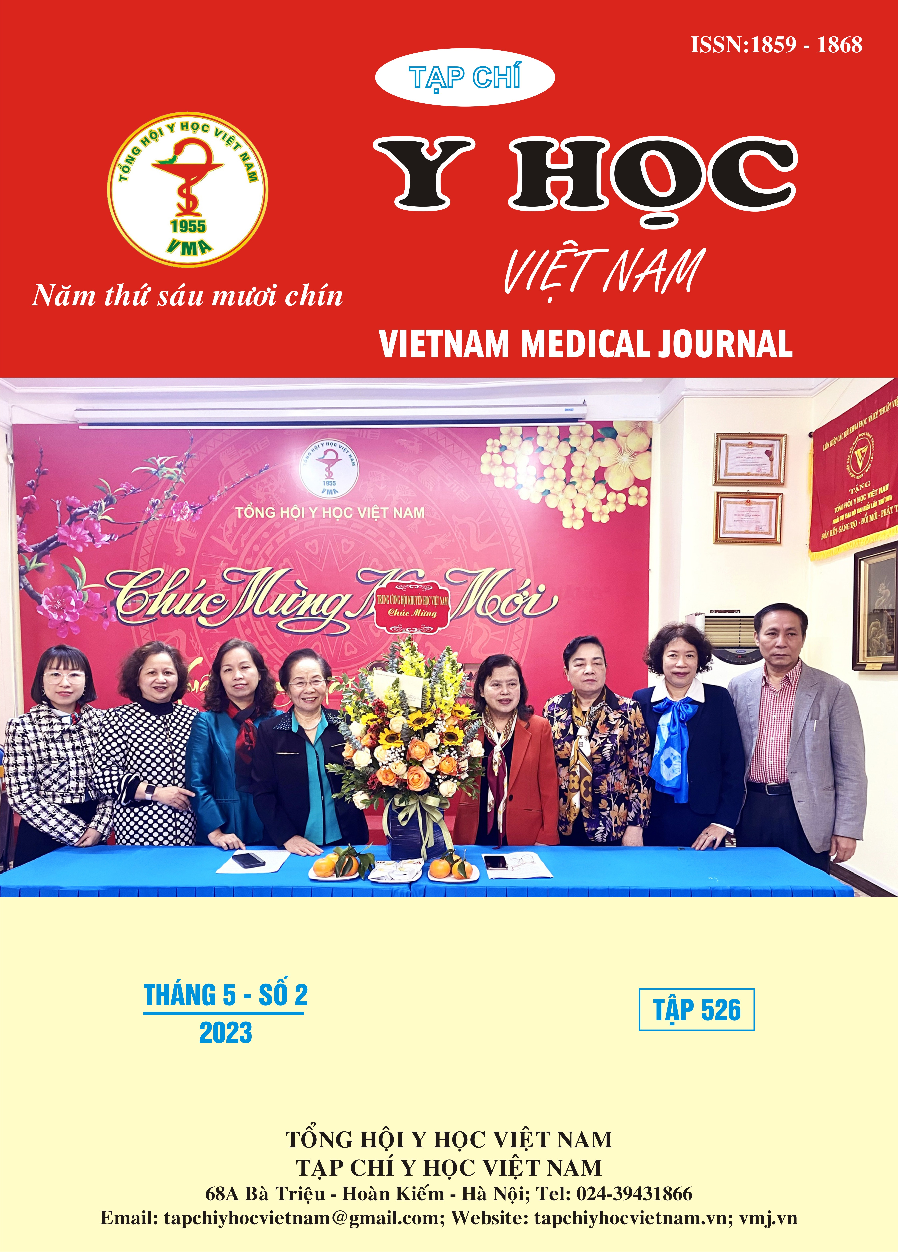ISOLATION OF 14-DEOXY-11,12-DIDEHYDROANDROGRAPHOLID AS REFERENCE STANDARD FROM ANDROGRAPHIS PANICULATA (BURM.F.) NEES
Main Article Content
Abstract
Objectives: To study the isolation of 14-deoxy-11,12-didehydroandrographolide as a reference from Andrographis paniculata (Burm.f.) Nees. Subjects and methods: Green chiretta collected in Cao Lanh, Dong Thap province in January 2015. The specimen has been identified with the scientific name at the Department of Botany, Faculty of Pharmacy - University of Medicine and Pharmacy, Ho Chi Minh City as Andrographis paniculata (Burm.f.) Nees, Acanthaceae and kept at the Faculty of Control Oriental Medicine - Medicinal Materials Laboratory, Institute of Drug Quality Control, Ho Chi Minh city. The extraction, isolation and purification of 14-deoxy-11,12-didehydroandrographolide were conducted. The structure was determined by methods of ultraviolet spectroscopy, infrared spectroscopy, MS mass spectrometry, and nuclear magnetic resonance spectroscopy with measurement techniques 1H-NMR, 13C-CPD, DEPT, HSQC, HMBC, COSY. Purity testing was carried out by thin layer chromatography, high performance liquid chromatography, and differential thermal analysis. The quantification of 14-deoxy-11,12-didehydroandrographolide was developed and validated by liquid chromatography with the following criteria: system suitability, specificity, linearity, repeatability, reproducibility, and precision. Results: From 3.1 kg of herbal powder of green chiretta leaves, which were hot-extracted at 70oC with methanol, 514.26g of total methanol (MO) were obtained. Overnight cold crystallization obtained 506.65 g of methanol (M) separated andrographolide, sequentially distributed shaking with n-hexane solvent (impurity), chloroform obtained high chloroform (414.83 g). 5.2 g of high chloroform was taken and conducted classical column chromatography (Column I). The mixure was eluted with chloroform - ethyl acetate solvent varying from (100 : 0) to (75 : 25) yielding 800.25 mg of DP in the form of needle crystals and further purified by classical column chromatography. (Column II) with the chloroform - ethyl acetate system varying from (100 : 0) to (95 : 5), 700.32 mg of the substance was obtained in the form of white needle-shaped crystals (DP). From the results of UV, IR, MS, and NMR spectrum analysis, the structure of DP is 14-deoxy-11,12-didehydroandrographolide, corresponding to the formula C20H28O4. Purity check by HPLC was 99.99 %. The content of 14-deoxy-11,12-didehydroandrographolide was 96.51%. The quantification procedure has been validated. 14-deoxy-11,12-didehydroandrographolide was established as reference standard according to validated quantitative procedure. Chromatographic purity was determined through interlaboratory evaluation to GLP and ISO 17025 standards, each laboratory received 6 random vials. From the results of 3 laboratories, the assigned value was determined according to ISO 13528. The assigned value of 14-deoxy-11,12-didehydroandrographolide after calculation was 96.51%. Conclusion: The results showed that the content of 14-deoxy-11,12-didehydroandrographolide extracted from the leaves of green chiretta was 96.51%. The 14-deoxy-11,12-didehydroandrographolide quantification procedure was linear in the range 123.54 – 286.99 mg/ml with R2 = 0.9995, good repeatability with RSD ≤ 2%, accuracy with a high recovery rate of 98.02 – 101.34%. The obtained 14-deoxy-11,12-didehydroandrographolide was used as a reference standard to test the quality of the green chiretta and preparations made from this medicinal plant.
Article Details
Keywords
green chiretta, diterpene lactone, 14-deoxy-11,12-didehydroandrographolide, HPLC
References
2. Dey YN, Kumari S, Ota S, Srikanth N. Phytopharmacological review of Andrographis paniculata (Burm. f) Wall. ex Nees. International Journal of Nutrition, Pharmacology, Neurological Diseases. 2013;3(1):3.
3. Đỗ Tất Lợi. Những cây thuốc và vị thuốc Việt Nam. Nhà xuất bản Y học. 2004.
4. Hossain S, Urbi Z, Karuniawati H, et al. Andrographis paniculata (Burm. f.) Wall. ex Nees: An Updated Review of Phytochemistry, Antimicrobial Pharmacology, and Clinical Safety and Efficacy. Life (Basel, Switzerland). 2021;11(4).
5.International Organisation for Standardization. Guide 13528:2015 Statistical methods for use in proficiency testing by interlaboratory comparisons. 2015;2:1-89.
6. Kumar A, Dora J, Singh A, Tripathi R. A review on king of bitter (Kalmegh). International Journal of Research in Pharmacy and Chemistry. 2012;2(1):116-124.
7. Maloney KN. Biologically active natural products from plants and their endophytes [Doctor of Philosophy Dissertation], Cornell University; 2007.
8. Subramanian R, Asmawi Z, Sadikun A. A bitter plant with a sweet future? A comprehensive review of an oriental medicinal plant: Andrographis paniculata. Phytochemistry Reviews. 2012;11(1):39-75.


